Why is 'Rocky' in his sky blue tuxedo drawing so much attention in Wrightsville Beach?
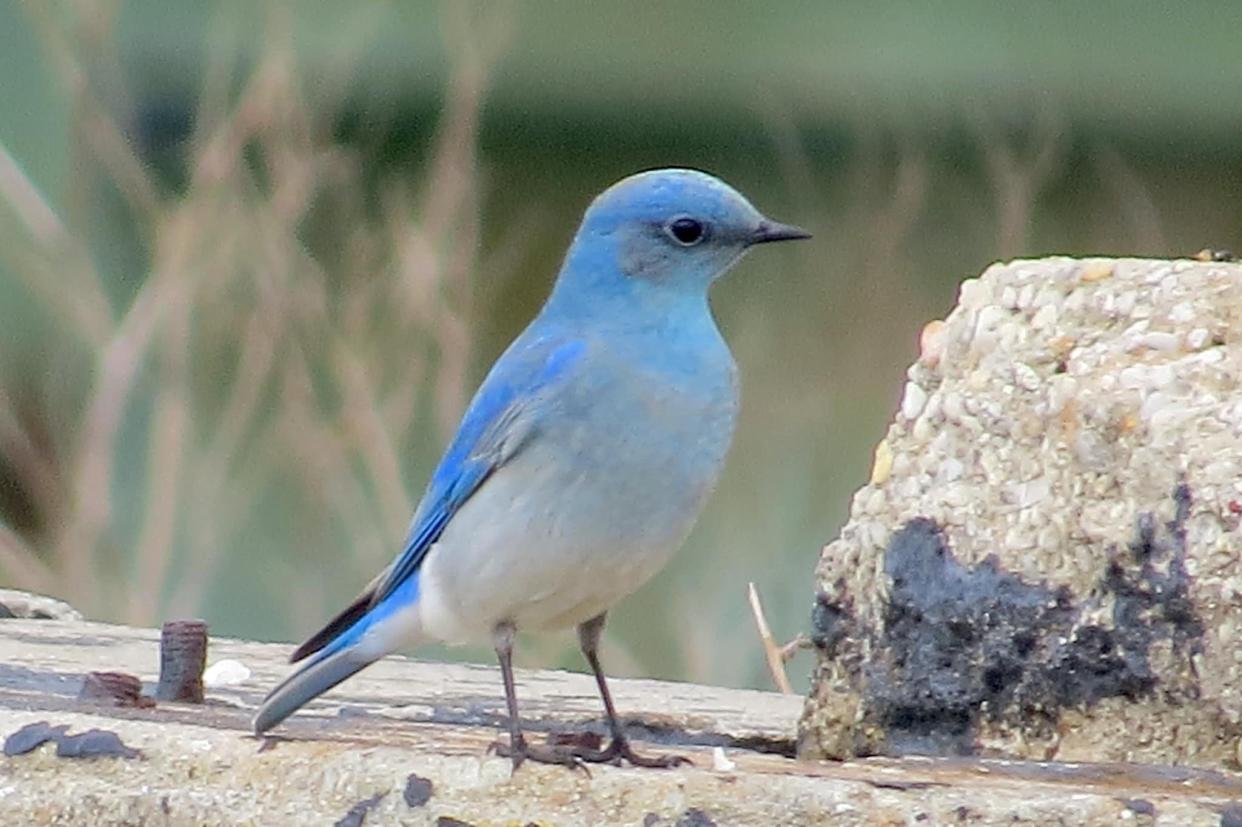
With North Carolina one of the fastest growing states in the country, it’s no surprise to hear of new arrivals from long distances away winging it to the Tar Heel State.
But a recent arrival to Wrightsville Beach is causing quite a stir, even for the ritzy coastal escape near Wilmington known to draw its fair share of the rich and famous.
"Rocky," however, doesn’t appear to be letting all of the attention go to his head – although he may be accused of posing now and again for his fans, some of whom have traveled hundreds of miles to see him.
"He just looks so elegant in his blue tuxedo and all," said Christy Jones, who had risen before the sun rose on a Thursday morning to drive 120 miles down Interstate 40 from Raleigh to see the wayward traveler. "And it's great that he doesn't seem to mind all the attention he's attracting."
More: On the Outer Banks, structures rise and fall as climate change looms
Why Rocky is drawing so many people to Wrightsville Beach isn't due to his location per se, although it probably doesn't hurt that it overlooks Banks Channel and the weather has been relatively dry and mild this winter.
It's because he's not supposed to be here.
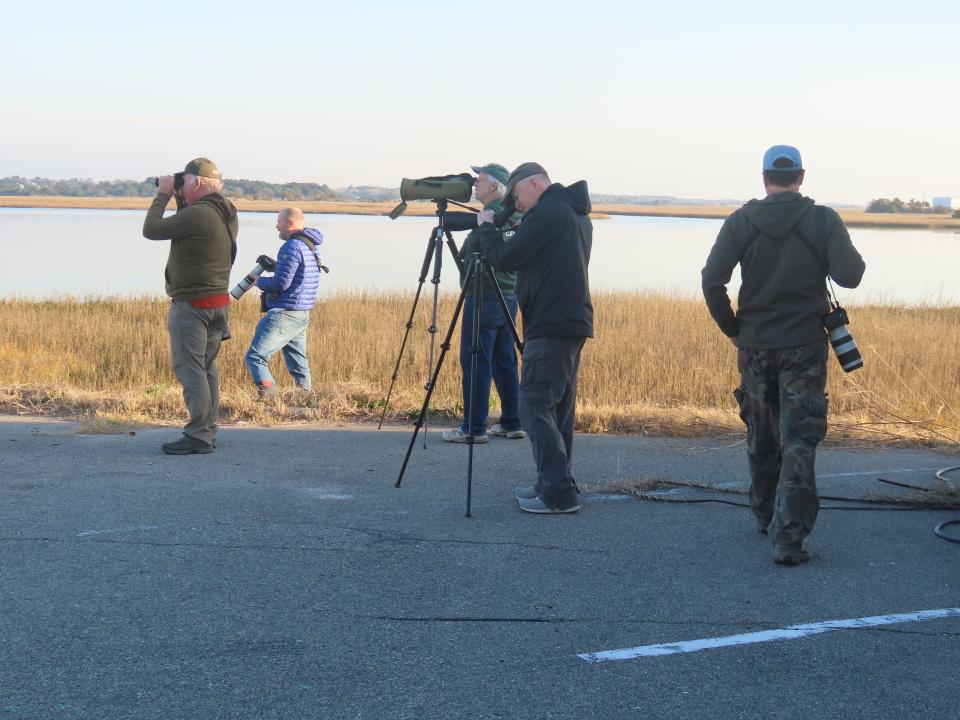
Rocky is a mountain bluebird, a species that's normally found in the mountains and higher elevations of the Western U.S., Canada, Alaska and down into central Mexico. Although it shares many of the same characteristics and behavior with North Carolina's native eastern bluebirds, there's one big difference.
"He's just so striking, his color," Jones said as she sat in the parking lot of the closed convenience store just off one of Wrightsville Beach's main drags. She had seen Rocky earlier in the day, perched on a fence, but not for the past hour or so as lunchtime approached.
NC warming: Will climate change allow alligators to live west of Fayetteville, I-95?
Still, Jones wasn't giving up hope of seeing him again before she headed back to the Triangle.
"This is just so special to see him here," she said.
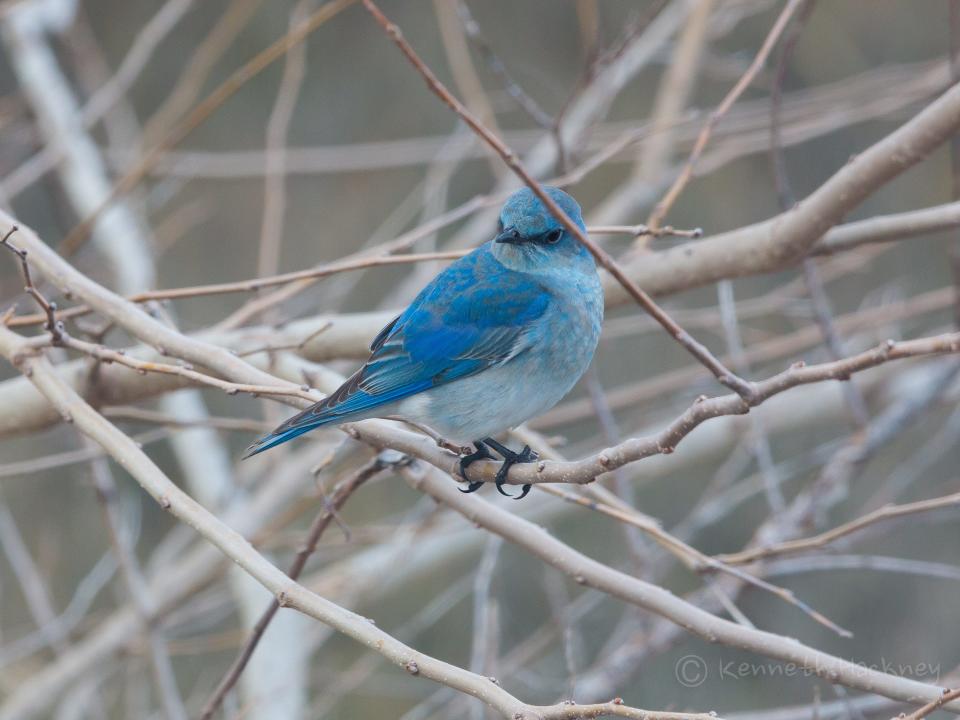
In North Carolina, this is only the second time a mountain bluebird has been recorded in the state, the other sighting back in 1985 at the Biltmore Estate in Asheville. But according to the "Birds of North Carolina" website, that sighting is listed as "provisional" because there's no photographic evidence of the bird's visit.
With Rocky's visit to Wrightsville Beach, visual proof of his presence isn't a problem. And for serious bird-watchers, commonly called twitchers, having the chance to see a mountain bluebird thousands of miles outside of his home range is like catnip.
'Something special'
Local videographer Ken Hackney was chilling in the old convenience store's parking lot, one of his favorite spots to relax and maybe grab some unique coastal snaps, in early February when a flash of color caught his attention.
"This blue just popped out of the tree, and I knew just by looking at it that it wasn't a bird from this area, that it was something special," he said.
Floods: What ancient trees from New Bern to Wilmington are telling us about future flooding events
That was Feb. 11. The next day, after Hackney shared his pictures with some fellow birders and it was posted on some popular bird-watching sites, the old convenience store's parking lot was a flutter with twitchers equipped with their binoculars and long lenses.
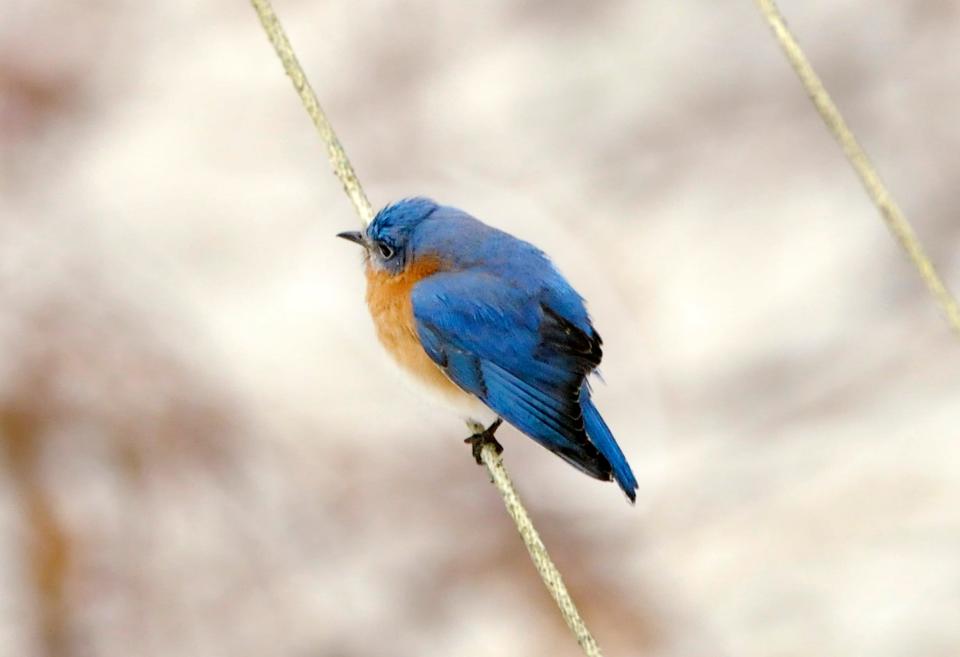
"That's when I knew how big a deal it really was," Hackney said.
Chatting with some of the bird-watchers, Hackney discovered many were tourists who had just happened to hear about the rare visitor at the coast while others had driven hundreds of miles, including from South Carolina and Virginia, to see the mountain bluebird.
"Then when they found out I was the one who discovered him, they asked me if I had come up with a name," Hackney said with a laugh. "I hadn't really given it much thought, but I thought since he's from the Rocky Mountains, let's call him Rocky."
Rocky's rocky road ahead
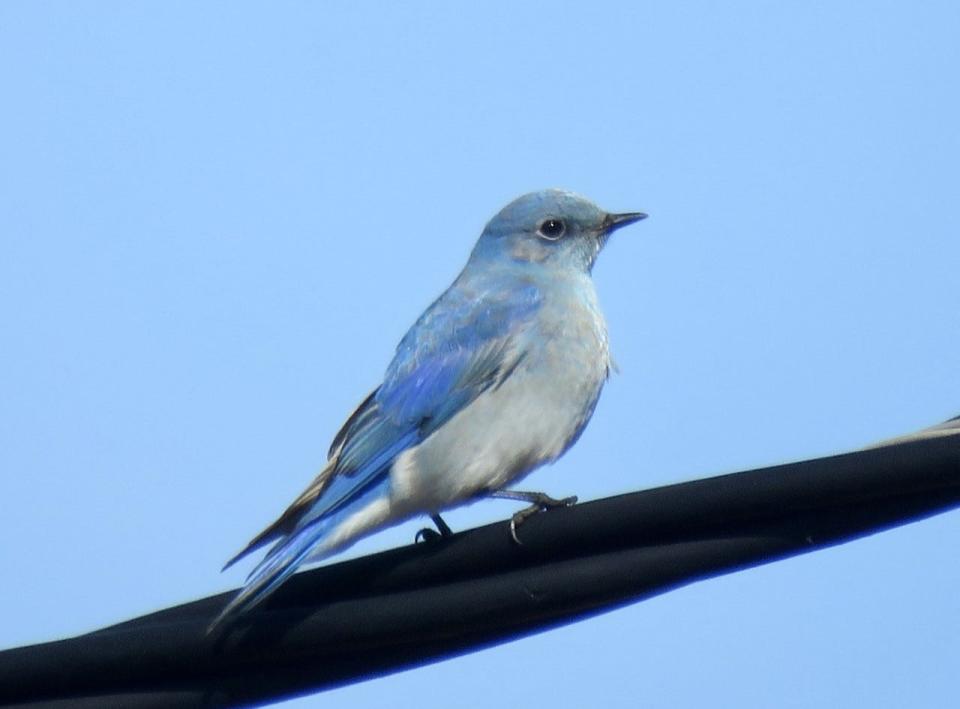
So how did Rocky end up about as far east as he could go on the North American continent?
Curtis Smalling, director of conservation for Audubon North Carolina, said there are a variety of reasons why birds sometimes wind up well outside their normal ranges. That includes storms, blustery weather or just some kind of confusion with the bird's internal navigation system.
"But we really just don't know what could push a species that generally isn't that highly migratory that far east," Smalling said.
Another unknown is how long he's going to maintain a home at the N.C. coast.
More: Dire climate report is a call to action. What individuals can do to make a difference
According to bird-watchers and online posts, Rocky isn't hurting for food — mostly insects — and freshwater at his new digs. He also doesn't seem to mind his noisy neighbors, especially a resident mockingbird.
At some point, however, probably when the weather begins to heat up, he might get the inclination that it's time to return home to the mountains like his brethren who are currently overwintering in Arizona, New Mexico or Mexico.
"But when that is and where he might go from here is a total mystery," said Lindsay Addison, a coastal biologist with Audubon North Carolina.
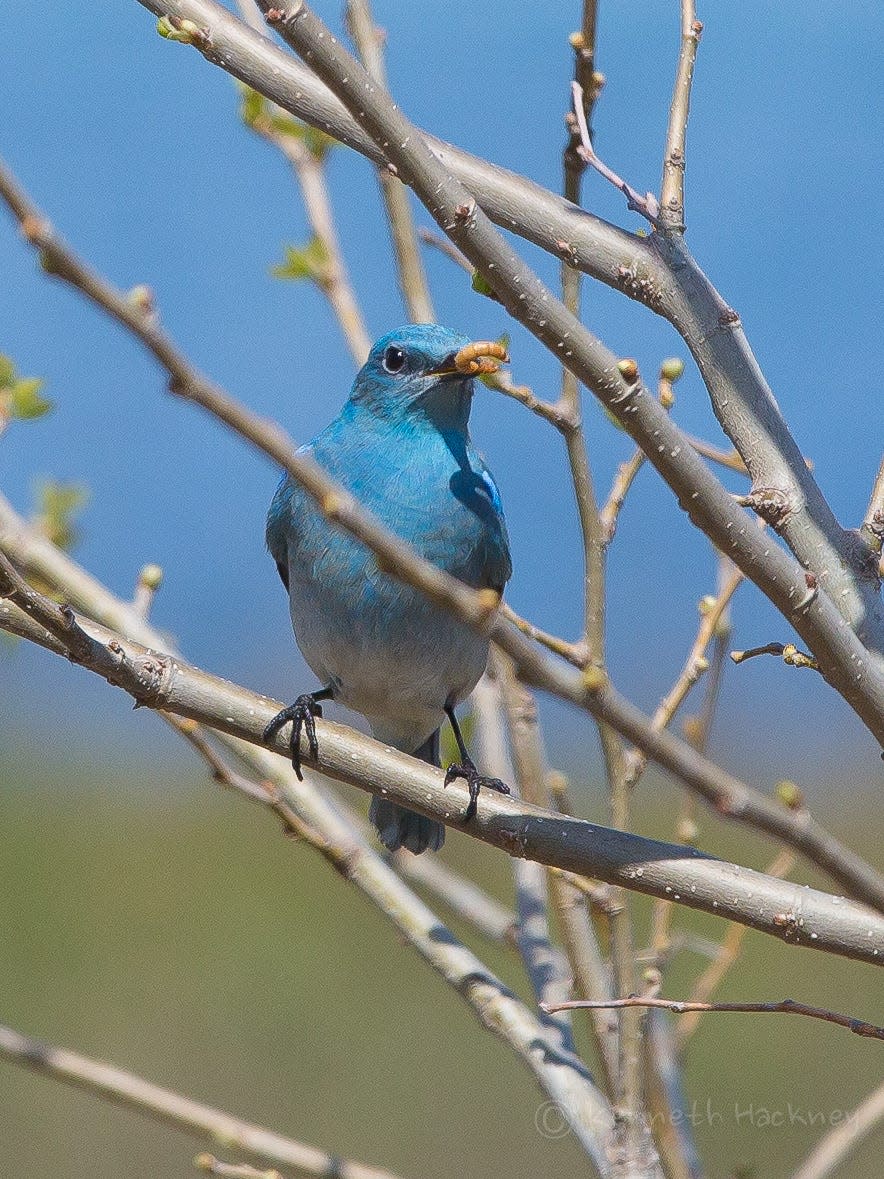
While Rocky's presence is delighting bird-watchers, the mountain bluebird's presence so far out of his normal range could signal something else.
Smalling said Audubon for years has been tracking millions of observations by bird-watchers and scientists to gauge the impact of climate change on hundreds of bird species, including bluebirds.
"Bluebirds were partly chosen because they are pretty easy to spot and track because of their bright color and that they often hang out in easy-to-spot locations," he said.
While a 1.5 degrees Celsius (roughly 2.7 degrees Fahrenheit) change is considered the most warming the Earth can handle without seeing major environmental degradation, climatologists warn that we are well on our way to heating the world by much more than that unless dramatic changes in our use of fossil fuels are made in the coming years.
Climate chaos: As climate change looms, NC coastal town hopes for state help to stabilize its waterfront
According to Audubon's research, a 1.5 degrees Celsius warming by the end of this cenwould cost the mountain bluebird 10% of its winter range, mainly on the fringes of its current range due to habitat becoming too hot, and 38% of its summer range. Those numbers jump to 19% and 53%, respectively, if the world's temperatures rise by 3 degrees Celsius (5.4 F). Any "gains" in habitat due to higher temperatures would be much lower, according to Audubon.
“It is a species where we're already seeing on-the-ground evidence that climate change is having an impact," Smalling said.
So did rising temperatures drive Rocky to Southeastern North Carolina?
"It's hard to know," Smalling said.
Whatever brought the striking blue wanderer to Wrightsville Beach, Hackney said he's glad he spotted Rocky. Bluebirds were a favorite of his dad's. Plus, he added, it's not every day you get to document history.
"I've shot lots of birds over the years," Hackney said, "but this one holds a special place."
Reporter Gareth McGrath can be reached at GMcGrath@Gannett.com or @GarethMcGrathSN on Twitter. This story was produced with financial support from 1Earth Fund and the Prentice Foundation. The USA TODAY Network maintains full editorial control of the work.
This article originally appeared on Wilmington StarNews: Mountain bluebird spotted in Wrightsville Beach a long way from home

